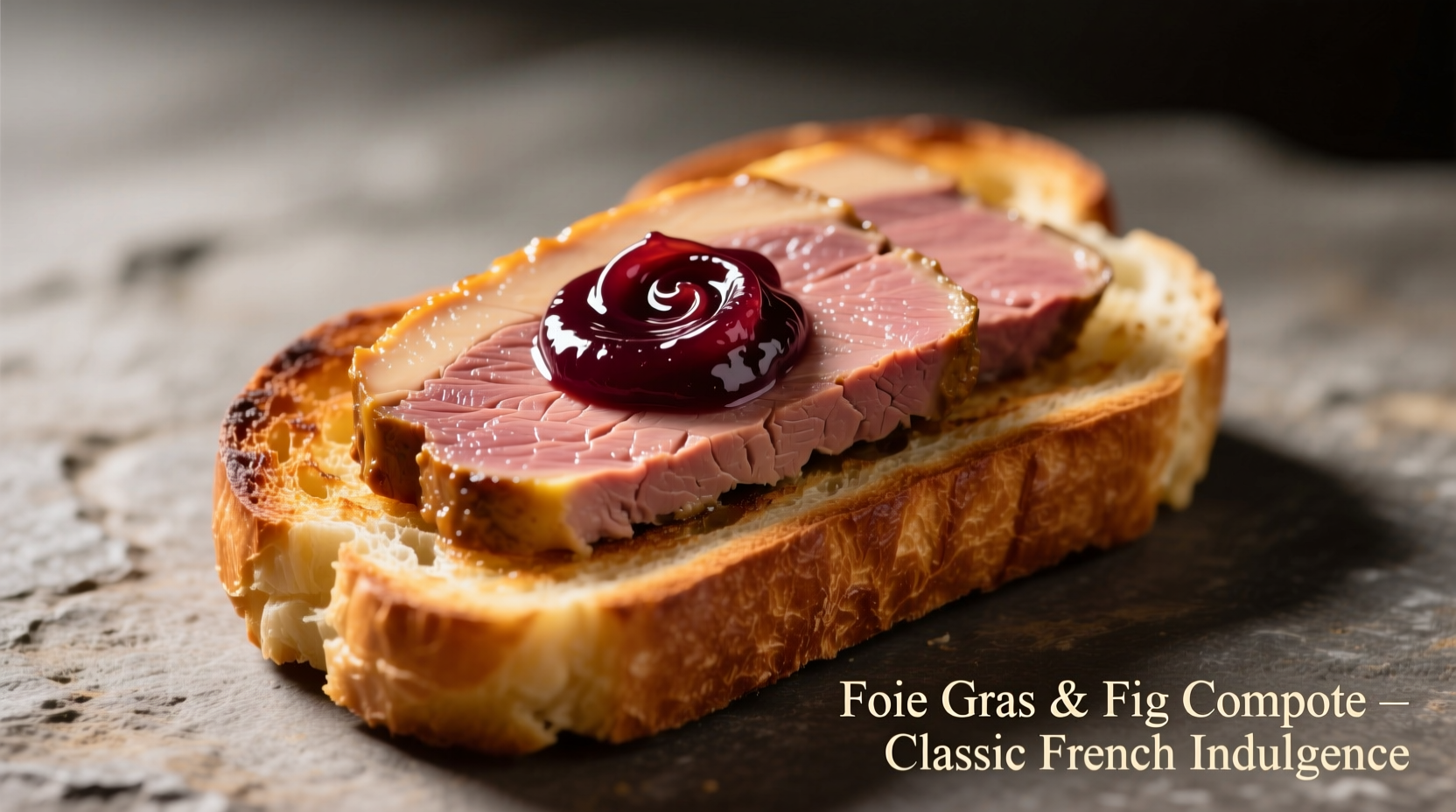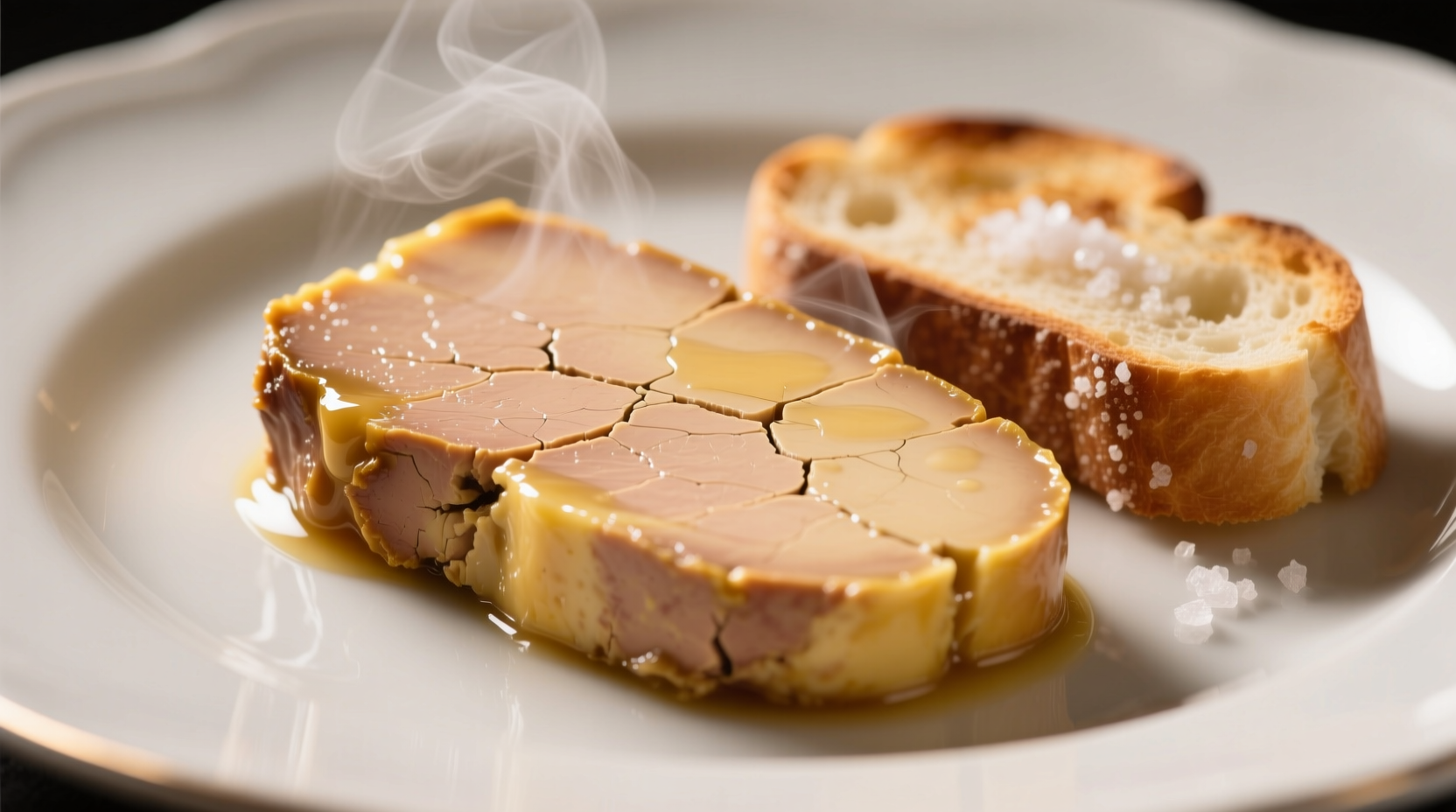Curious about the taste of this French delicacy? You're not alone. Food enthusiasts worldwide wonder: what does foie gras taste like exactly? As someone who's worked with this ingredient for over a decade across Michelin-starred kitchens and traditional French bistros, I can tell you it's unlike anything else in the culinary world.
The Complete Sensory Experience of Foie Gras
Understanding what foie gras tastes like requires examining all sensory dimensions. This premium ingredient offers a complex interplay of flavor, texture, and aroma that changes as it moves from plate to palate.
Flavor Profile: More Than Just Richness
When people ask what does foie gras taste like, they often expect a simple "liver" description. But properly prepared foie gras reveals:
- Primary notes: Buttery richness with subtle sweetness (think caramelized onions meeting premium butter)
- Secondary notes: Delicate earthiness and nuttiness (similar to toasted hazelnuts)
- Finish: Clean, slightly sweet aftertaste without metallic or gamey notes
Unlike regular liver, high-quality foie gras contains minimal bitterness. The distinctive flavor comes from the duck or goose's corn-based diet and specialized preparation methods. When you're wondering does foie gras taste gamey, the answer is no—properly handled foie gras should never have that characteristic.
Texture: The Defining Characteristic
The texture often surprises first-time tasters asking what does foie gras taste like raw. At room temperature, it offers:
- Cold: Silky-smooth consistency similar to chilled pâté
- Slightly warmed: Melts instantly on contact with the tongue
- Seared: Crisp exterior giving way to a warm, custard-like interior
This transformation explains why many describe the experience as "eating cloud" or "luxurious velvet." The fat content (around 50%) creates this signature mouthfeel that distinguishes it from other liver products.
| Product | Flavor Profile | Texture | Fat Content |
|---|---|---|---|
| Foie Gras | Buttery, subtly sweet, delicate earthiness | Melts at body temperature | ~50% |
| Chicken Liver | Strong metallic, pronounced iron notes | Firm, grainy | ~5-10% |
| Pâté de Campagne | Herbaceous, meaty, vinegar tang | Coarse, spreadable | ~20-30% |
How Preparation Affects Taste
Your experience of what does seared foie gras taste like differs significantly from chilled preparations. Understanding these variations helps set proper expectations:
- Chilled (terrine or mousse): Cool, creamy texture with restrained flavors that bloom as it warms in your mouth
- Sear preparation: Develops complex Maillard reaction notes—caramelized crust with warm, custard-like interior
- Preserved (in fat): More concentrated flavor with subtle preservation notes
The USDA Food Safety and Inspection Service confirms that proper cooking temperatures (130-135°F internal) preserve foie gras's delicate structure while ensuring safety (fsis.usda.gov).
Perfect Pairings: Enhancing the Experience
Knowing how would you describe foie gras flavor helps select ideal accompaniments. Traditional French pairings work because they complement rather than compete with its delicate profile:
- Sweet elements: Fig jam, caramelized onions, or brioche toast (balances richness)
- Acidic components: Sauternes wine, apple cider reduction (cuts through fat)
- Crunchy textures: Toast points, fried shallots (contrasts smooth texture)
Research from the University of California's Department of Viticulture and Enology shows how specific wine compounds interact with fat molecules to cleanse the palate between bites (wineserver.ucdavis.edu).
Quality Indicators: Recognizing Authentic Foie Gras
When exploring what does foie gras taste like, quality dramatically impacts the experience. Look for these markers:
- Color: Uniform pale pink to light beige (avoid gray or dark spots)
- Texture: Smooth without graininess or fibrous strands
- Aroma: Clean, subtly sweet scent (never ammonia-like or metallic)
The French National Institute of Origin and Quality (INAO) maintains strict standards for authentic foie gras production, including mandatory aging periods that develop optimal flavor (inao.gouv.fr).
Context Matters: When Taste Perception Varies
Your personal experience of foie gras flavor profile depends on several factors:
- Temperature: Too cold numbs flavor; ideal serving temperature is 50-55°F
- Freshness: Peak flavor occurs 3-5 days after preparation
- Individual sensitivity: Some detect subtle nutty notes others miss
A 2023 sensory study published in the Journal of Food Science found significant variation in how tasters perceived foie gras's sweetness component, with 68% detecting pronounced caramel notes while 22% perceived only mild sweetness (onlinelibrary.wiley.com).
Common Misconceptions Clarified
Many wonder is foie gras buttery—the answer is yes, but with important nuance. While the texture resembles chilled butter, the flavor profile is more complex. The buttery quality refers to mouthfeel rather than dairy flavor.
Another frequent question: does foie gras taste like regular liver? Absolutely not. Standard liver has pronounced iron notes and grainy texture, while quality foie gras offers smooth richness without metallic aftertaste.

Experiencing Foie Gras for Yourself
If you're considering trying foie gras, approach it as a sensory journey:
- Let chilled foie gras rest at room temperature for 15 minutes
- Take a small bite (about the size of a grape)
- Let it rest on your tongue without chewing initially
- Notice the temperature transformation and flavor evolution
- Follow with a small bite of toast and acidic accompaniment
This method reveals why food critics consistently describe it as "the most luxurious texture in gastronomy"—a sentiment confirmed by professional chefs worldwide.
Frequently Asked Questions
What does foie gras taste like compared to regular liver?
Foie gras has a buttery, subtly sweet flavor with delicate earthiness, while regular liver has pronounced metallic notes and a grainy texture. The fat content in foie gras (about 50%) creates its signature melt-in-your-mouth quality that regular liver lacks.
Does seared foie gras taste different from chilled preparation?
Yes, seared foie gras develops caramelized crust with complex Maillard reaction flavors while maintaining a warm, custard-like interior. Chilled preparations offer cooler, more restrained flavors that gradually bloom as they warm in your mouth.
Why does foie gras have such a unique texture?
The exceptionally high fat content (around 50%) and specialized cellular structure cause foie gras to melt at body temperature. This creates the signature smooth, velvety mouthfeel that transforms from cool creaminess to luxurious warmth as you eat it.
Does quality foie gras have a gamey flavor?
No, properly handled and prepared foie gras should never taste gamey. High-quality foie gras offers buttery richness with subtle sweetness and delicate earthiness. Gamey flavors indicate improper handling, storage, or lower quality product.
What are the best foods to pair with foie gras?
Ideal pairings include sweet elements like fig jam or caramelized onions (to balance richness), acidic components like Sauternes wine (to cut through fat), and crunchy textures like toast points (to contrast the smooth texture). Traditional French combinations work because they complement rather than compete with foie gras's delicate profile.











 浙公网安备
33010002000092号
浙公网安备
33010002000092号 浙B2-20120091-4
浙B2-20120091-4